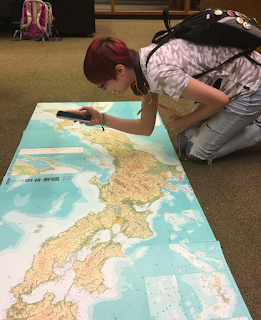Fred Krakowiak drawing
World Wildlife Federation
Maps
in the News: Hunting Elephants for
Trophies
The
U.S. Fish and Wildlife Service announced that it has lifted a 2014 Obama administration
ban on importing sport-hunted trophies of elephants from Zimbabwe and
Zambia. In a statement to National
Public Radio, the Service “determined that the hunting and management programs
for African elephants in Zimbabwe and Zambia will enhance the survival of the
species in the wild.”
The
Humane Society of the U.S. plans to fight the lifting of the ban, claiming that
Zimbabwe’s unstable government will not support an elephant management plan. From Wayne Pacelle, the organization’s
president and CEO: “Elephants are on the list of threatened species; the global
community has rallied to stem the ivory trade; and now, the U.S. government is
giving American trophy hunters the green light to kill them.”
National
Geographic published maps (above, click to enlarge) related to sport-hunted
trophies in the decade leading up to the ban in 2014. Canada was the biggest source of trophy
imports due to its close proximity and popular species such as black bears,
grizzly bears, moose, and wolves. South
Africa was the second largest source with nearly 400,000 imports.
According
to the report from National Geographic, in the decade from 2005 to 2014, “American
trophy hunters imported nearly 32,500 lions, elephants, rhinos, buffalo, and
leopards.” 1,892 African elephants were
imported to the U.S. from Zimbabwe during that time.
In
2007 National Geographic published maps depicting the range of the African
elephants in 1979 versus 2007. And the next
map shows the range of the elephant in 2012 just prior to the ban.
For
more information about cartographic resources for threatened and endangered
species, please contact the Ball State University Libraries GIS Research and
Map Collection (GRMC) at 765-285-1097.














































